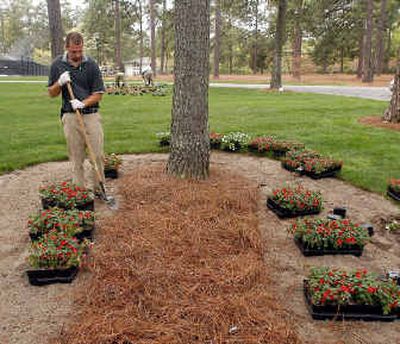U.S. Open returns to Pinehurst

PINEHURST, N.C. – The sleepy southern village that awoke six years ago to remind casual golf fans of its legacy has started to dress up again for the 2005 U.S. Open.
While golf course surgeons squeeze the fairways and speed up the trademark undulating turtleback greens of Pinehurst No. 2, a town with just a pair of gas stations and not a single fast-food joint is bracing for as many as 45,000 daily visitors and the crush of attention that comes with the national golf championship.
The town and course held up well during the 1999 U.S. Open, drawing widespread praise from players and fans. This time, the challenge has been to improve on that showing.
“The biggest challenge was to give the ‘05 Open its own personality and character and image,” said Beth Kocher, chairwoman of the executive committee for this year’s event.
Memories of 1999 will be difficult to shake. Payne Stewart won that year’s title by a stroke over Phil Mickelson by sinking a 15-foot par putt on the 18th hole. Stewart, in his trademark knickers and tam, leaned forward on one foot and punched the air after the putt fell.
Stewart died a little more than four months later in a private plane crash in South Dakota. His victory pose has been commemorated with a life-size bronze statue just behind the 18th green.
Three months after Stewart’s death, the U.S. Golf Association announced its marquee tournament would return to Pinehurst in 2005. The six years between U.S. Opens on the same course is the shortest span since the 1940s.
“The fact they brought it back so quick shows the confidence they had in us,” Kocher said.
Stewart’s dramatic win and the quick return of the Open seem fitting to those who regard Pinehurst among the world’s top golfing destinations – on par with Pebble Beach, Calif., and St. Andrews, Scotland.
Moore County, where Pinehurst is located, has about 75,000 full-time residents and, at last count, 43 golf courses. About two-thirds are in the Pinehurst and Southern Pines area, including Pine Needles, host of the 1996, 2001 and 2007 U.S. Women’s Open events.
Pinehurst, about 80 miles southwest of Raleigh, was founded by Boston soda fountain magnate James W. Tufts in 1895 as a health resort among the longleaf pine forests of North Carolina’s Sandhills. Frederick Law Olmsted, designer of New York City’s Central Park, drew the blueprint for an adjoining village that hasn’t changed much in more than a century.
Though the village’s population has grown to about 10,000, its historic downtown remains filled with specialty shops. The town itself has narrow, twisting roads lined with lush lawns, azaleas and dogwoods.
After famed course designer Donald Ross opened Pinehurst No. 2 in 1907, the area became a destination for top golfers, course designers and events. Championships held in the area have included the Ryder Cup, the PGA Championship and USGA championships for amateurs, women and seniors.
Pinehurst Resort, a division of Dallas-based resort company ClubCorp, will manage all off-course aspects of June’s Open – including sales, marketing, concessions, transportation and parking. It will rely on 5,200 volunteers, most from the immediate area, to keep things running smoothly.
“Pinehurst is a special place,” said Reg Jones, championship director for the 2005 Open. “You have a very golf-savvy community and this is what they live for.”
Pinehurst officials acknowledge that USGA officials worried about the rural nature of the village and the surrounding area before the 1999 tournament, fearing cramped roads and limited lodging would inconvenience visitors – some of whom stay an hour and a half away in Raleigh.
This year, the town will again prohibit parking on its streets and use its harness horse training track as a parking hub for shuttles that will take spectators to the course.
“Even when you had 40,000-plus fans on the golf course, 400 yards away you still had a village people could go to,” said Mayor Steven Smith.
Since 1999, greenskeepers have stretched Pinehurst No. 2 by 100 yards while narrowing the fairways to about 25 yards. The resort is converting two holes from adjoining courses into a driving range near the practice green. They’ll also build a “corporate village” for 65 sponsors and add a 40,000-square-feet tent for merchandise sales.
The course – one of only three public courses to host a U.S. Open – will shut down two weeks before the start of the tournament, with all onsite work completed by June 13, three days before the start of championship play that will be watched by millions on television.
Local planners seem confident they’ll score again in this second round on the world stage, even as they work steadily to prepare their playground.
“It all went so well in 1999, we’re just saying we need to clone 1999 and tweak it,” Smith said. “It makes you proud. There’s a certain pride to saying, ‘Here we are. We’re this wonderful place. We have this wonderful event. … We live this everyday.’ “